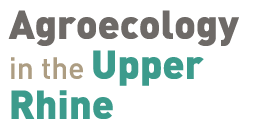The objective of the EU Member States is to halve greenhouse gas emissions by 2030 and to become carbon neutral in the long term. These ambitions concern the agricultural sector in particular and the carbon working group aims to build recommendation strategies in terms of action levers to reduce the carbon footprint of livestock systems.

In total, some 50 diagnoses were carried out in Alsace and Baden. The experts in the working group will now be able to make a joint analysis of the results. Figures will thus be able to supplement the technical data sheets currently being drawn up in order to disseminate recommendations for reducing the carbon footprint of farms.
Three farms were subjected to a double diagnosis: one with the CAP’2ER tool (used in France) and one with the tool developed by Convis (used in Germany). The aim was to have several concrete examples in order to compare the diagnostic tools.
Although the tools provide similar results, the approaches are not the same for all points. For example, CAP’2ER performs a carbon storage assessment in the form of CO2 equivalent, whereas the Convis tool performs a humic assessment. The latter tool does not provide as many indicators as the CAP’2ER tool.







